Construction projects involve a wide range of tasks and documents that keep the process running smoothly. Among the most important of these are construction submittals. Though often overlooked, submittals play a crucial role in ensuring that a project meets its specifications and quality standards. Whether you are a contractor, architect, or project manager, understanding construction submittals is key to avoiding costly delays and errors. What you need to know about construction submittals. Talk to an expert or work with them through construction management services.
This article will guide you through the basics of construction submittals, explaining what they are, why they matter, and how to manage them effectively.
What Are Construction Submittals?
Construction submittals are documents, samples, or information that contractors send to architects or engineers for approval. These documents typically include product data, shop drawings, material samples, and mockups. The goal is to ensure that everything used on the project aligns with the design specifications.
For example, if you’re constructing a commercial building, the contractor will submit details about the materials to be used. These could include paint colors, tile types, or even plumbing fixtures. Once the architect or engineer reviews the submittal, they either approve or request changes.
Types of Submittals
There are several types of submittals, each serving a specific purpose. Understanding the different categories will help you manage them better.
Product Data Submittals:
Product data submittals provide detailed information about the materials, equipment, and products used in construction. For instance, manufacturers’ brochures, technical data sheets, and certifications fall under this category.
Shop Drawings:
Shop drawings offer detailed instructions on how components will be fabricated or installed. These drawings may include plans for structural steel, HVAC systems, or custom cabinetry. They ensure that construction aligns with the project’s design and specifications.
Samples and Mockups:
Samples and mockups allow the architect or owner to physically review materials before full-scale production. These could include tiles, paint, or other finish materials. By providing samples, the team can confirm that everything matches the design vision.
Closeout Submittals:
Closeout submittals are submitted at the end of the project. These documents include warranties, operation manuals, and as-built drawings. They provide a clear record of the materials and equipment used, which helps with future maintenance.
Why Submittals Are Important
Submittals serve as a quality control mechanism during construction. They ensure that the project meets the owner’s expectations and the designer’s intent. Without this approval process, costly errors could occur, leading to delays or even legal disputes.
By reviewing submittals, architects and engineers confirm that the materials and methods align with the project’s design. For example, if a contractor proposes a different type of tile, the architect can reject it if it doesn’t meet the project’s aesthetic.
Additionally, submittals help keep everyone on the same page. They provide a clear line of communication between the contractor, architect, and owner. This transparency helps prevent misunderstandings and ensures that the project progresses smoothly.
The Submittal Process
The submittal process is straightforward, but it requires attention to detail and clear communication. Here’s an overview of how it typically works.
- Preparation by the Contractor:
The contractor first reviews the design documents and gathers the necessary submittals. These may include product data, shop drawings, and samples. The contractor ensures that all submittals meet the project specifications before sending them for approval. - Review by the Architect or Engineer:
Once submitted, the architect or engineer reviews the documents. They check that the proposed materials, products, or methods align with the project’s design. If everything meets the standards, the submittal gets approved. If not, the architect may request changes or additional information. - Resubmission:
If the architect requests revisions, the contractor must revise and resubmit the documents. This step continues until the submittals are fully approved. - Record Keeping:
Approved submittals must be documented and saved for future reference. Contractors and project managers should keep a detailed log to track the status of all submittals.
Common Submittal Mistakes
Despite their importance, submittals often face delays or issues that can derail the project. Avoiding common mistakes will keep the project on track.
Late Submittals:
Submitting documents late is one of the most frequent issues. It can lead to significant project delays, especially when waiting for critical materials. Set clear deadlines for submitting and reviewing submittals to avoid this.
Incomplete Information:
Submitting incomplete or incorrect information leads to confusion and back-and-forth communication. Always ensure that submittals are accurate and provide all necessary details.
Lack of Communication:
Poor communication between the contractor, architect, and engineer can result in delayed approvals. Establish a system for regular updates to ensure that everyone is on the same page.
Tips for Managing Submittals
Proper management of the submittal process is key to keeping your project on schedule and within budget. Here are some tips for efficient submittal management.
Create a Submittal Schedule:
Before the project begins, create a detailed submittal schedule. This document should outline when each submittal is due and the time frame for review. A submittal schedule ensures that nothing is overlooked and helps prevent delays.
Use Submittal Tracking Software:
Tracking submittals manually can be time-consuming and error-prone. Submittal tracking software simplifies the process by organizing documents, setting deadlines, and sending reminders. Many construction project management platforms offer built-in tools to streamline the submittal process.
Maintain Clear Communication:
Establish clear lines of communication between the contractor, architect, and project manager. Regular check-ins or meetings can help address issues before they become significant problems.
Review Submittals Thoroughly:
Rushed reviews can lead to overlooked errors. Take the time to review submittals carefully to ensure they meet all project specifications.
Prepare for Revisions:
Not all submittals will get approved on the first try. Build in time for potential revisions to avoid unexpected delays. By anticipating the need for revisions, you’ll stay on track even if changes are required.
Conclusion
Construction submittals are a vital part of any project’s success. They ensure that all materials, products, and methods align with the project’s design and specifications. Properly managing submittals keeps the project on schedule and helps avoid costly mistakes. What you need to know about construction submittals. Talk to an expert or work with them through construction management services.
By understanding the submittal process, staying organized, and maintaining open communication, you can ensure a smoother construction experience from start to finish.


